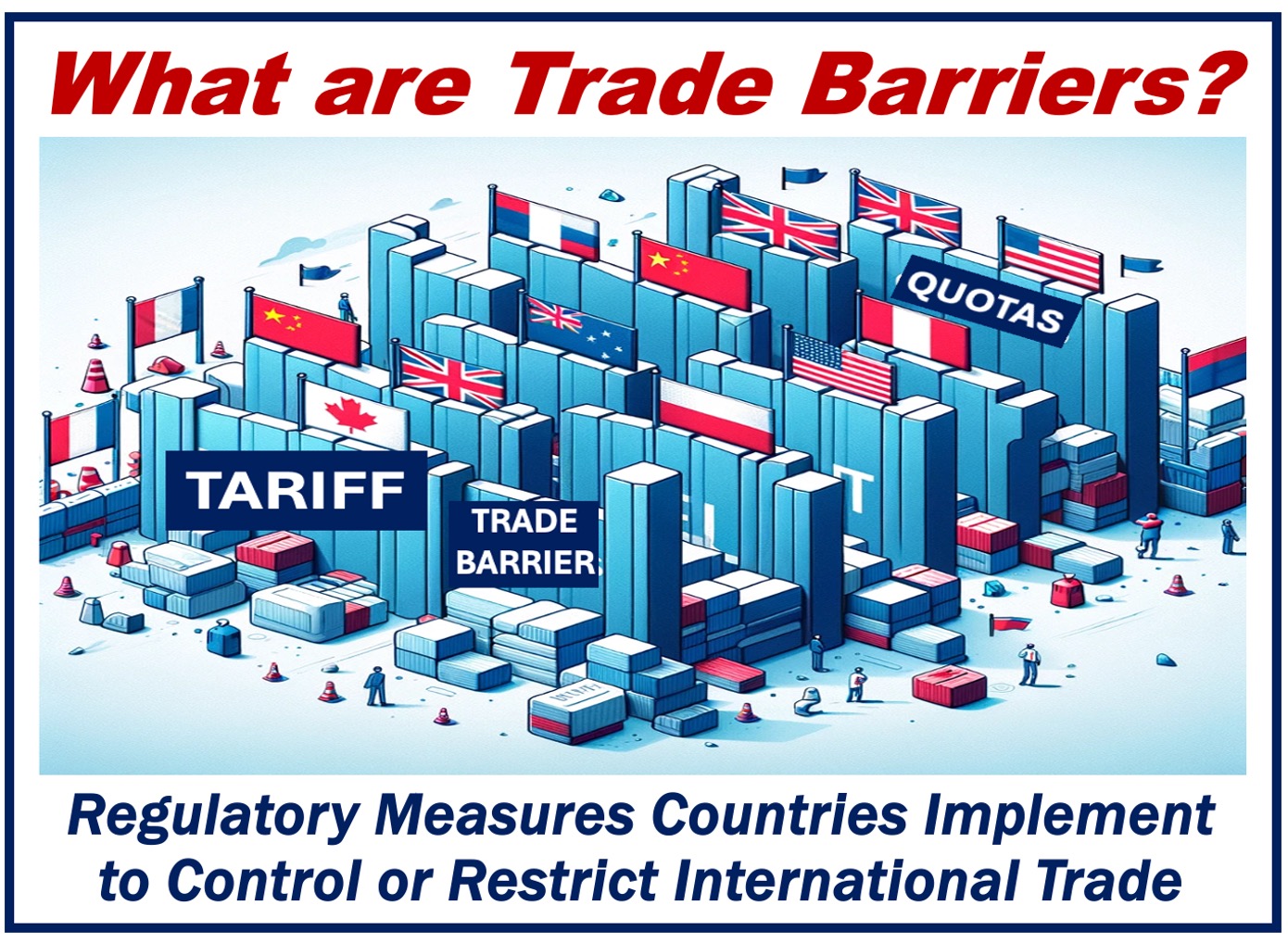Any measure that a country’s government imposes to control or limit international trade, that is, limit the exchange of goods and services across borders, is known as a Trade Barrier.
Trade barriers have existed since ancient times. Around 432 BCE, Athens, during the height of the Delian League’s power, imposed restrictions on exports to and imports from rival territories like Sparta to protect its economy and exert political influence.
Various types of trade barriers
Trade barriers can take various forms, from tariffs and quotas to more subtle regulatory obstacles.
Let’s take a look at some of these trade barriers:
-
Tariffs
Taxes imposed on imported goods are known as tariffs. For consumers, tariffs make products more expensive than their local equivalent.
Governments impose tariffs on products mainly to protect their domestic industries from foreign competition. Sometimes, this tax is imposed in response to unfair business practices by the exporting country. That country could, for example, be subsidizing the production of the product.
-
Quotas
Quotas are limits on how many units of a product can be imported or exported during a specific period.
If the government caps the number of goods entering the country, it can control market saturation, protect local jobs, and ensure the survival of domestic producers.
- Subsidies
If the government supports the production of a specific product financially, it subsidizes it. This may be done, as in the other cases, to protect local producers. It may also be done to prevent malnutrition if it is an essential food item.
In Mexico, for example, the government has historically subsidized corn products, including tortillas, because they are a staple food item for much of the population.
-
Non-tariff barriers (NTBs)
NTBs are laws and regulations that a country imposes to control the amount of trade across its borders.
Examples include product standards, safety regulations, and sanitary checks. The importing country may insist that it is not stifling competition when it is clear that it is.
If certain goods tend to get stuck for days, weeks, or even months in customs, producers are more likely to stop trying to sell their goods in that country.

Image created by Market Business News.
Effects of trade barriers
It is tempting to impose trade barriers to protect domestic producers. However, over the long term, the country loses out. Today, the countries with the highest standards of living are great international traders – they impose the fewest trade barriers.
If a domestic producer gets an unfair advantage, it has less incentive to compete or improve its products. As producers abroad compete and continue improving, the protected one at home may not. Its exports will fall and consumers at home will lose out.
-
Risk of trade wars
Trade barriers imposed in response to unfair business practices can be effective in prompting trade negotiations and compliance with fair trade practices. However, they also risk escalating into trade wars, which can hurt the economies of both countries.
In today’s globalized economy, the debate over trade barriers is ongoing. Some argue for their necessity while others advocate for free trade.
Free trade areas
Since the Second World War, many free trade areas have emerged. Countries belonging to them export to and import from one another without any trade barriers.
The most notable free trade areas today are the European Union (EU), the North American Free Trade Agreement (NAFTA), which was replaced by the United States-Mexico-Canada Agreement (USMCA), the Association of Southeast Asian Nations (ASEAN) Free Trade Area, and the Comprehensive and Progressive Agreement for Trans-Pacific Partnership (CPTPP).
Video expanation
This video presentation, from our YouTube partner channel – Marketing Business Network, explains what trade barriers are using simple and easy-to-understand language and examples.
